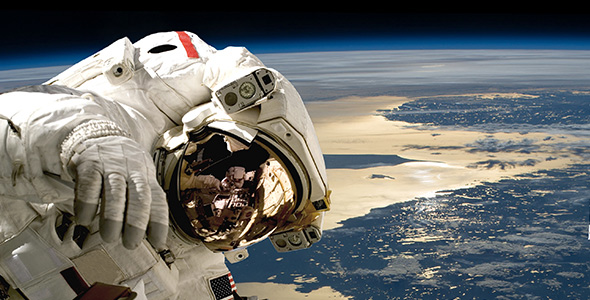Before explaining the difference between LASIK surgery and PRK, let’s go back in time: It is July – 1969, and a changing America gathers round their television sets- many now in color, to watch as a man walks across the sandy surface of a once-mysterious moon.
This was the day that defined a decade, promising and new – barreling forth into an untapped horizon of change. While this achievement signified so much to those who were grown – what it did, perhaps more than anything else, was birth in every child an unrelenting hope that they could do just about anything they set their mind to do.
Astronauts: Then and Now
The NASA Space Program is still alive and thriving today, even after all these years; but while the title of astronaut is still one of the most coveted titles in the world, today’s space man and woman has not been privy to the almost rock star status that was synonymous with the career in the 60’s. Women wanted to marry them – men wanted to be them. It was a time that was truly unlike anything our modern astronauts could even begin to fathom – but that is nowhere near the only thing that has changed over the last 47 years.
What Is LASIK Surgery and PRK?
Laser-Assisted in situ Keratomileusis (or LASIK surgery), and Photorefractive Keratectomy (PRK) are today’s top two most innovative vision correction procedures available. Providing positive results for those persons needing to correct vision problems such as, near and far-sightedness (myopia and hyperopia respectively), and astigmatism. LASIK surgery and PRK have many similarities, and just one main difference. However, depending on your health and vision needs, your Houston eye specialist will be able to determine which procedure is best for you. Likewise, with astronauts today, deciding on which option is best, is largely dependent on the kind of vision correction solution he or she may need.
The main difference between PRK and LASIK surgery is in how the cornea is treated to correct vision during the procedure. During LASIK surgery, a thin layer is created on the cornea; and after the surgery, patients report immediate results. Thus, resulting in a quicker recovery time. For PRK, the outer layer of the cornea is removed entirely to correct the patient’s vision.
Can Astronauts Get LASIK Surgery or PRK?
The pool from which to pull great astronauts has always notoriously exclusive and the exclusivity of the health requirements to become an astronaut did not help matters much for hopefuls. 20/200 vision is not a trait most people are born with, but it is a trait that is required to become an astronaut candidate. Both NASA and the military carried a strict policy to not allow those with eye corrective surgeries to enlist… however, the military finally came around. NASA, on the other hand, held out for years; and extensive in-house research was performed before finally making the decision in 2007 to consider astronaut hopefuls with both LASIK or PRK procedures. Today, LASIK surgery has made Houston eye surgeons even busier than usual, and for good reason.
Why Did NASA Hold Off on Approving LASIK Surgery Candidates for So Long?
Uncertainty – plain and simple. NASA knew that these surgeries held up beautifully here on Earth… but what would the results be like in space with varying levels of gravity and pressure? Space can be very hard on an astronaut’s body, taking its toll on both physical and mental health. However, after years of research, NASA conducted that the surgery was stable enough to be considered safe for candidates who might someday have the ability to fly through space and see it close up. Yet, if you are a hopeful – the sooner you get LASIK surgery the better. There is a one year wait from the procedure time to be eligible for the program.
What is the Least Recognized Change of the Space Program Over the Last 50 Years or So?
In a word – politics. The Cold War prompted both Russia and the U.S. to find new, innovative ways to one up each other. Roger Launius, space historian with the Smithsonian, notes that the race to space was, in part, a snapshot of the capabilities of each country’s military and their technologies. Each wanted the other to know their technology was superior; and while military capability is still strongly indicative of a country’s technological advances in warfare, today Russia and the U.S. have worked together on countless space projects. Simply for the dream of knowing what is out there, how it relates to us, and how the universe works, is now the focus of space travel. This would have been unheard of in the 60’s and comes as a surprise to baby boomers who grew up in the throes of escalations between the two nations.
What is the Biggest Hurdle in Space Travel Right Now?
According to Bill Barry of NASA, the limits of space travel do not lie in technology any more. Technologies are advancing rapidly and they show no signs of slowing down. The major hurdle today is overcoming possible health issues – both known and unknown, some of which may be long term. For instance, Soviet astronaut Titov worried the whole world when he developed a very severe nausea upon entering space. No one understood it at the time – how could they? It was all so new. Now, however, the condition has a term – space adaptation syndrome – and it is expected. It only takes a week for dehydration to begin to show its tell-tale signs.
However, the medical health sciences are striving to find even more advancements in technology that will enable man to travel longer and even further in space. So where do we go from there when we make it to Mars? The journey will be long… dehydration and radiation are a real concern. Thus, biomedical advancements will be the next great hurdle of future astronauts. And the advanced technology of LASIK surgery for space travelers has certainly made its mark in making it now possible for more adventurous men and women to become astronauts.
Considering LASIK surgery or PRK? Contact Dr. John Goosey if you have any concerns!






